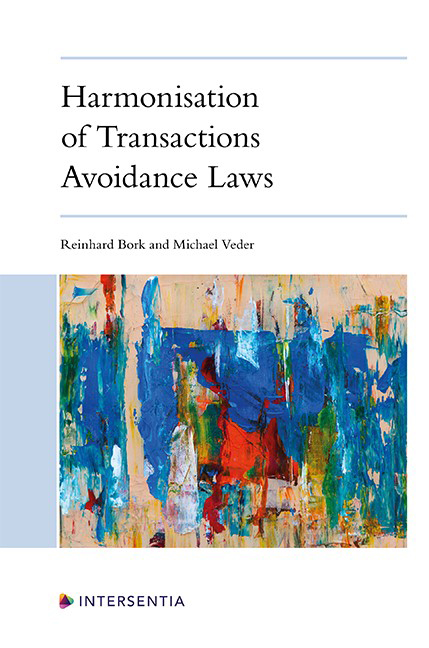The Netherlands
Published online by Cambridge University Press: 26 May 2022
Summary
Implementation of the Model Law in Dutch law would have a significant impact on the structure of its transactions avoidance provisions. The Model Law deviates substantially from the approach of current Dutch transactions avoidance law. As will be set out in more detail below, the most striking and important differences relate to: (i) the differentiation between various avoidance grounds; (ii) the restricted use of subjective elements as prerequisites for successful transactions avoidance; (iii) the extension of transactions avoidance laws to legal acts that have been performed by other parties than the debtor; (iv) the introduction of suspect periods; (v) the inclusion of intentionally detrimental acts within the realm of transactions avoidance laws; and (vi) the limitation period.
A. INSOLVENCY LAW OF THE NETHERLANDS
As set out in more detail in the National Report for the Netherlands, the Dutch Bankruptcy Act (Faillissementswet, hereafter: Fw) provides for the following insolvency proceedings:
1. bankruptcy (faillissement);
2. suspension of payments (surseance van betaling);
3. natural persons’ debt relief scheme (schuldsaneringsregeling natuurlijke personen); and
4. pre-insolvency scheme (homologatie van een onderhands akkoord).
Dutch transactions avoidance law with respect to bankruptcy proceedings – which are primarily aimed at liquidation of the debtor’s assets and distribution of the proceeds to the creditors – is mainly incorporated in Art. 42 – 51 Fw. These proceedings, and consequently the provisions on transactions avoidance, apply to debtors generally, i.e. regardless of whether they are legal entities or natural persons, and cover both consumers and entrepreneurs. The transactions avoidance provisions in the Fw also apply in the natural persons debt relief scheme (to which only natural persons, both entrepreneurs and consumers, have access).
In respect of suspension of payments proceedings and pre-insolvency schemes (restructuring proceedings), no specific rules on transactions avoidance laws are provided for in the Dutch Bankruptcy Act. During such proceedings, creditors can individually challenge detrimental transactions on the basis of the general rules on transactions avoidance in Art. 3:45 et seq. of the Dutch Civil Code (Burgerlijk Wetboek, hereafter: BW).
- Type
- Chapter
- Information
- Harmonisation of Transactions Avoidance Laws , pp. 431 - 436Publisher: IntersentiaPrint publication year: 2022



